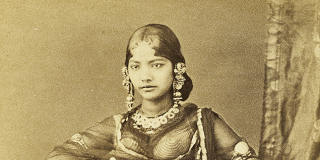
John Cage (1912–1992)
Aria, printed copy
1958
Music Division, The New York Public Library for the Performing Arts, Dorothy and Lewis B. Cullman Center
Aria, printed edition
Composer John Cage created experimental works that profoundly shaped music in the mid-20th century and made him a leader of the American musical avant-garde. Aria, composed for voice in any range, offers a prime example of Cage’s graphic notation, used to convey musical actions not communicable through traditional notation. Line forms express various musical sounds, black squares indicate “non-musical” sounds, and colors added manually to the printed edition indicate different styles of singing. The text itself is a combination of different languages and individual vowels. While every page of the score represents 30 seconds, the performer can determine the precise pace of each musical passage. Cage specified that Aria could be performed as a vocal solo or with one of two of his other works, Fontana Mix or any part(s) of Concert for Piano and Orchestra. He dedicated the piece to mezzo-soprano Cathy Berberian, who premiered Aria with Fontana Mix in Rome in 1959.
: Music Division, The New York Public Library for the Performing Arts, Dorothy an…
Currently on View at Stephen A. Schwarzman Building
This item is protected by copyright and/or related rights. You are free to use this Item in any way that is permitted by the copyright and related rights legislation that applies to your use. For other uses you need to obtain permission from the rights-holder(s).






